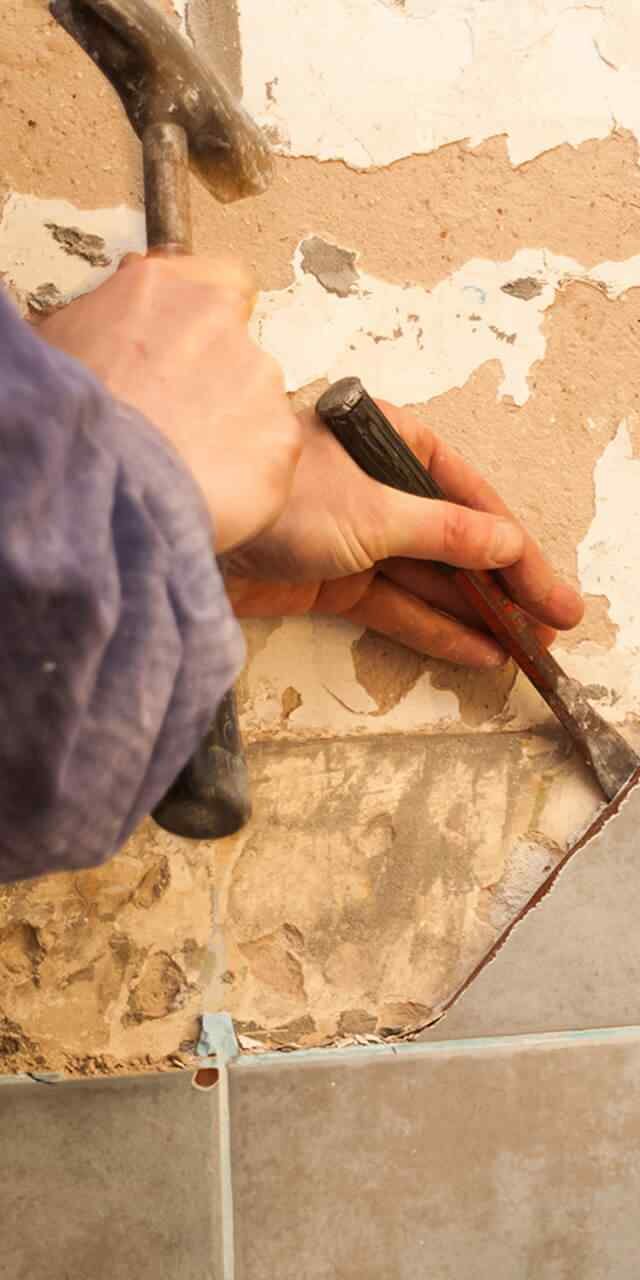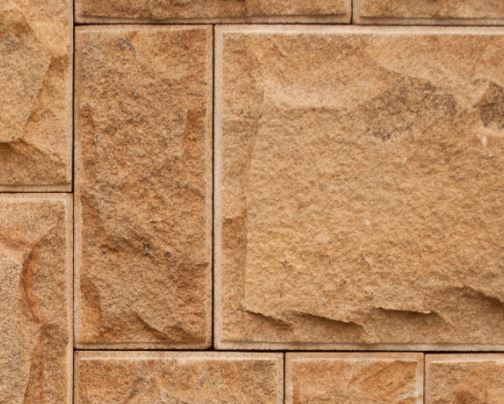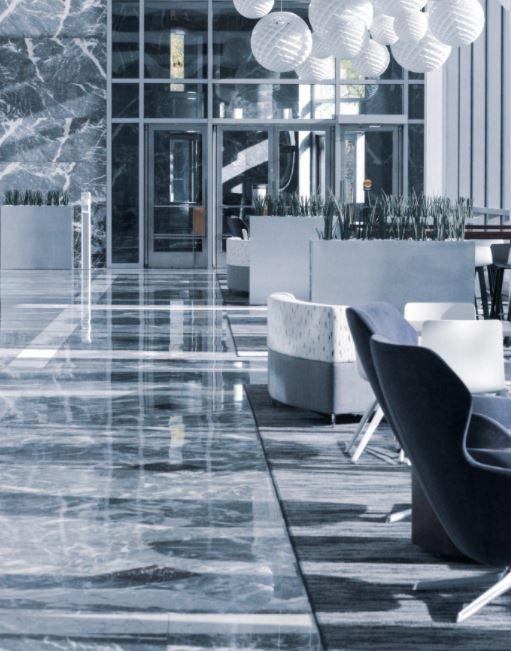
NATURAL STONE TILE
This guide addresses natural stone tiles that are adhered to a substrate. Natural stone tile, also called dimension stone, is stone that has been harvested from its in-situ position in the earth and cut and machined into tiles without altering the natural fabric of the material. Dimension stone tile has a nominal thickness of less than ¾” and does not have any facial dimension greater than 2’. Agglomerates and other engineered products do not meet this definition and therefore are excluded. Natural stone tiles that meet the definition but not the dimensional requirements are also excluded.
Stone tiles are generally supplied in a gauged, or calibrated, thickness, which generally has a tolerance of +1/32” in thickness. Colorings on face sizes will generally be +1/16”, with some tiles available in tighter tolerances.

Of equal importance to the method of formation is the primary chemical makeup of the stone they are either calcareous or siliceous . Calcareous rocks, such as marble, travertine, and limestone, are made up primarily of calcium carbonate mineralogy .Because calcium carbonate, or the calcite crystal, can be attacked by relatively mild acids, such stones are predictably vulnerable in acidic environments. Siliceous rocks are made up primarily of silicates , such as quartz and feldspar. Quartz- based sandstones and granite are examples of siliceous rocks.
Ceramic Tile
Types
The five major types of ceramic tile are porcelain, pressed floor, mosaic, quarry, and glazed wall tiles. Water absorption per the ASTM C373 tests method is the determinative factor for whether a tile is considered to be impervious, vitreous, semivitreous , or nonvitreous . Porcelain tile being at 0.5% absorption and Glazed wall tile being at 7.0% absorption.
Glass Tile Types
Based on temperature of formation, there are three types of glass tile.
Cast, fused, and low temperature coated. Each type is further categorized, based on size, as large format, mosaic, or miniature mosaic. Cast glass tiles are formed in a liquid state at 1600°F or higher. Many cast glass tiles are WAVY in slightly textured, with inherent folds, bubbles, and creases. These unique characteristics are achieved through the casting process.
Fused glass tiles are typically made from sheet glass units that are altered through heat between 1023°F and 1599°F During manufacturing, different materials are glazed are fused to the sheet glass units, usually any multiple stages, to create a variety of colors and patterns. Used glass tiles can be smooth, textured, uniform, or non uniform.
Low temperature coated glass tiles are made from sheets glass units that are altered through heat and temperatures less than 1022°F. Typically, these alterations involve heat transference of coatings to the back of transparent sheet glass units. These coatings can contain wide varieties of color and patterns.

